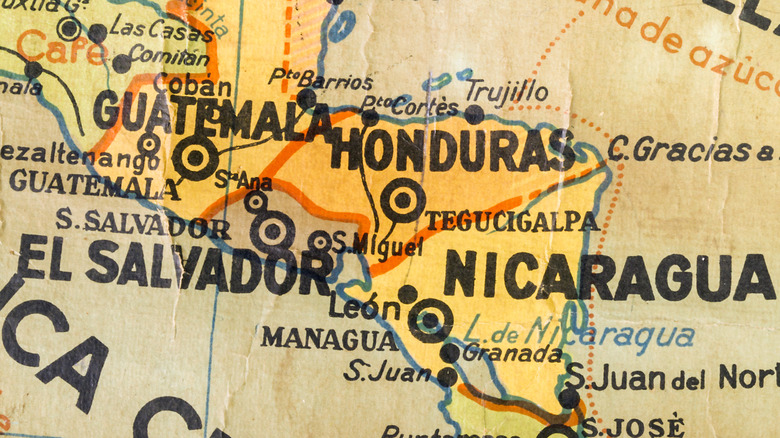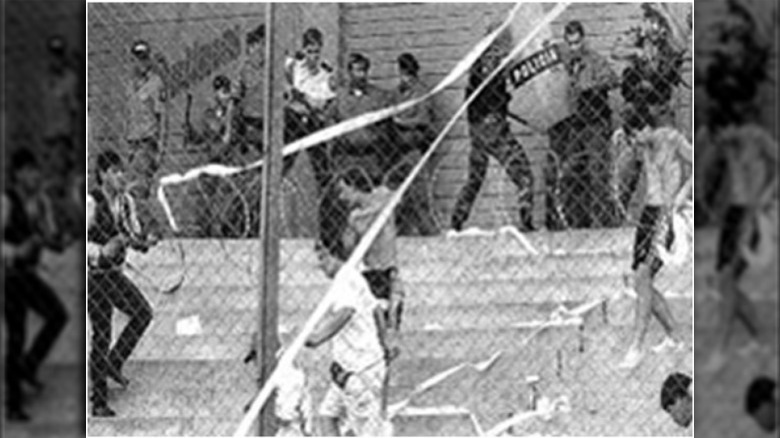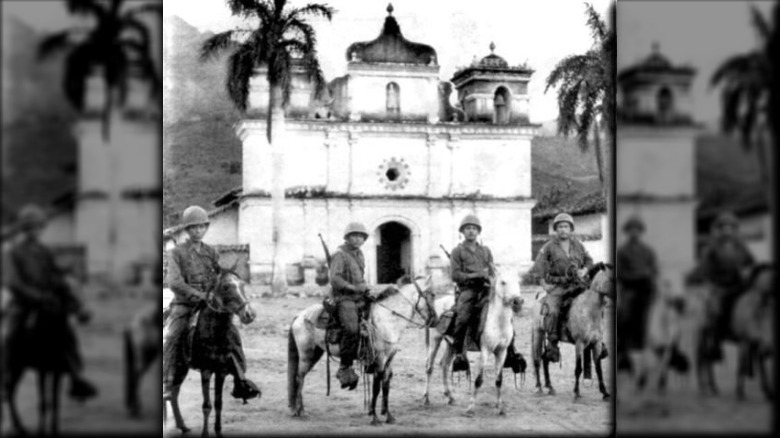The 100 Hour War Explained
Everyone's heard of the Hundred Years' War (which, per History, actually lasted 116 years). But have you heard of the 100 Hour War? Unless you're Central American or a fan of obscure historical trivia, the answer is likely "no." But this four-day conflict between El Salvador and Honduras is actually quite fascinating, as the unusual name suggests. (The conflict actually goes by another, even more intriguing name: the "Football War." You'll soon see why.)
The 100 Hour War broke out on July 14, 1969, when El Salvador invaded Honduras by air and land. But tensions between the two Central American countries had been running high for years. As the BBC explains, in the 1960s, Honduras had roughly five times as much land as El Salvador, but El Salvador had nearly 1 million more inhabitants. As a result, for several decades leading up to the 100 Hour War, Salvadorans had been immigrating to Honduras in order to work on the more broadly available farmland. This led to conflict between Salvadoran and Honduran peasant farmers as both groups had to compete for jobs on land owned by wealthy elites and American fruit companies.
The Honduran government sought to enact land reform to ease these tensions. But wealthy landowners and international corporations successfully lobbied the government to protect their own property rights. So, instead of going after the huge landowners, Honduras targeted Salvadoran immigrants, seizing their land and deporting thousands back to El Salvador.
Three bitter soccer matches were the powder keg for the conflict between El Salvador and Honduras
The government of El Salvador expressed outrage over the treatment of Salvadoran immigrants in Honduras, claiming that "the government of Honduras has not taken any effective measures to punish these crimes which constitute genocide, nor has it given assurances of indemnification or reparations for the damages caused to Salvadorans," per historian Thomas Anderson. To make matters worse, while all this was going on, El Salvador and Honduras were also engaged in a number of border disputes — primarily centering around small islands in the shared Gulf of Fonseca, the BBC reported.
Thus, relations between El Salvador and Honduras were at an all-time low when the two countries went head-to-head for the 1970 FIFA World Cup qualifying matches in 1969. On June 8, Honduras hosted the first of the two scheduled soccer matches and won 1-0. On June 15, El Salvador hosted the second match and won 3-0. Both games were followed by violent stadium brawls between Salvadorans and Hondurans.
The tie-breaking game was scheduled for June 27 in Mexico City, the BBC writes. On that day, El Salvador formally dissolved all diplomatic ties with the nation of Honduras, citing, among other things, the fact that nearly 12,000 Salvadorans had fled Honduras following the previous soccer match due to alleged persecution by Hondurans. The game proceeded as scheduled, and El Salvador won 3-2 in overtime.
A few weeks later, on July 14, the Salvadoran military attacked Honduras. Thus began the so-called "Football War."
The 100 Hour War ended on July 18, 1969 — just four days after it began
Per Duke University, El Salvador's offensive started with the launch of three fighter aircraft into Honduran airspace. El Salvador followed this surprise aerial attack with a land invasion along the main road that connected El Salvador and Honduras. With better arms and the element of surprise, the Salvadoran army was able to advance steadily into Honduras. However, things would soon swing in Honduras' favor due to a combination of stiff military resistance, inclement weather, and the Salvadoran army running out of ammunition. Likewise, Honduras' warplanes were able to bomb oil refineries and other strategic centers in El Salvador.
Within days, however, both sides were running low on ammunition. Honduras remained fearful that El Salvador could invade its capital city, so the Honduran government called on the "Organization of American States" — an international organization headquartered in Washington, D.C. — to intervene. The OAS did so, and on the evening of July 18, the organization successfully pressured El Salvador to agree to a ceasefire. (For those keeping count, that's very close to exactly 100 hours after the war began.)
Per the BBC, El Salvador's forces had fully withdrawn from Honduras by August 1969. Around 3,000 people are estimated to have died — primarily Honduran civilians. Many more were displaced. Tensions between Honduras and El Salvador remained high for many years, and minor border disputes continue to this day. Furthermore, despite qualifying for the 1970 World Cup, El Salvador was immediately knocked out after losing three matches in a row.


